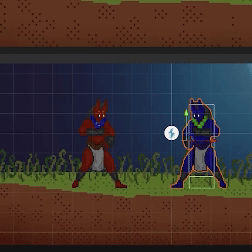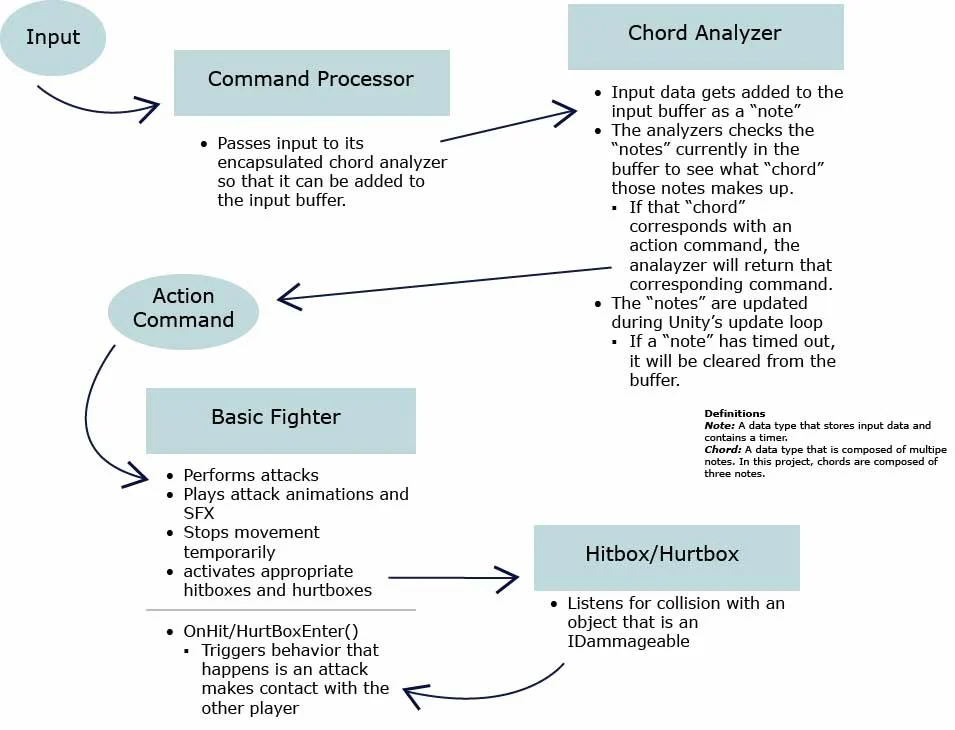Wicked Ruckus
2D Fighting Game | | Have you ever wondered which monsters of folktales and urban legends were the strongest?
Overview
Summary: This is an urban myth-themed 2D fighting game. Two players connect locally, on the same machine, and battle each other to the death or until runs out. This game was created by a small team of one programmer (myself), one designer, three artists, and two audio designers. We drew inspiration from games like the arcade Street Fighter games and Injustice: Gods Among Us. Having presented my VR game Croc Bash at public events (like at Columbia College Chicago’s Persistence Gala) and seeing people really have fun with it, creating a game that people could have fun playing at a public event was also a source of inspiration for me going into this project.
Tags: Unity 2022, C# and Visual Studio 2022, Project Management, Version Control (Git CLI, GitHub)
Duties
Created and pitched game design document and development team to gauge interest and build a development team.
Adapted the input buffer/combat combination system I wrote for Burnout Buster to work with Unity Engine’s update loop.
Implemented and tweaked that combat system for use as a fighting-game-style combat system.
Wrote and implemented a system that activates and deactivates hitboxes and hurtbox at the appropriate times while an attack is being executed.
Lead weekly stand-up and scrum meetings to review development progress, identify and assign tasks, and ensure team members had the needed resources to do their tasks.
Maintained a clean and scalable code base that allowed the designer on the team to implement and tweak game mechanics as needed.
Communicated and collaborated with team members to generate ideas for attack moves, character art, and environment art.
Documented and debugged issues that arose during development.
Maintained a running development log of the changes made to the code base and the reasoning behind those design decisions.
Held playtesting sessions to gather outside input and identify logic issues, elements of the game that cause the player unwanted frustration, and aspects that could be tweaked to create a better overall experience.
Implemented art and audio assets created by the team.
Wrote and implemented a management system to manage the various states of the game (start, first half of the round, end of the round, etc) and transition smoothly between them.
Utilized GitHub issues to manage tasks and ensure the project was meeting its development milestones.
Development Highlights
How the Input Buffer, Combat Combos, and Hit/Hurtboxes Function
Input Buffer Architecture
The input buffer system that drives the combat in this game heavily relies on the Command Design Pattern to efficiently translate input data into an attack action based on what the previous input data is, if that data is still relevant.
The Command Processor class collects this input data.
It converts that piece of data into a “note” object that also has a timer encapsulated in it.
The Command Processor then passes that note to its encapsulated Chord Analyzer, which adds it to the input buffer.
The Chord Analyzer checks the notes currently in the input buffer to see if they correspond with a valid “chord”, or a combination of inputs that corresponds with a specific action. If the chord is valid, the Chord Analyzer will pass back a new Command (attack action call) to the Command Processor.
The Command Processor will then take the command passed to it from its Chord Analyzer and pass it to the Command Receiver (the player object) in order for that command to be executed.


